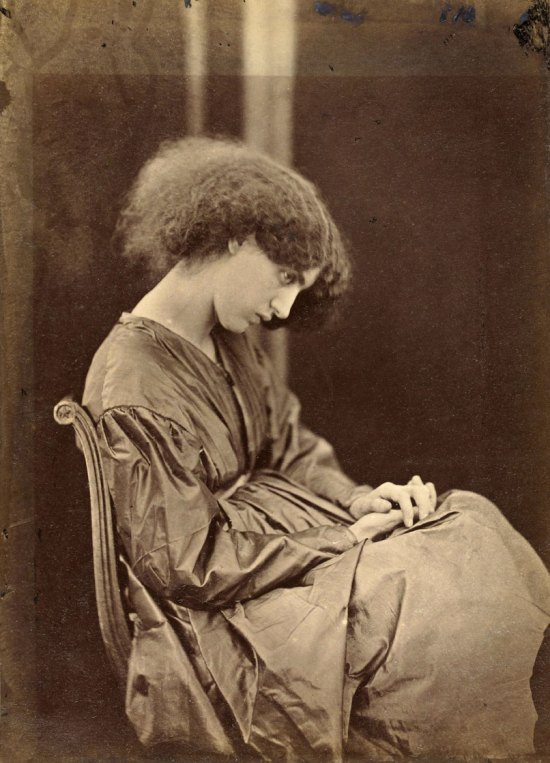Julia Margaret Cameron (1815 – 1879) was a British photographer, whose subjects were the celebrities of the victorian period and photographs with Arthurian and other legendary themes. Cameron was a devoted pioneer of the art of photography. She was visionary in her belief of the ‘divine’ power of the medium, daring in her experiments with image making and persistent in the promotion of her work. Cameron was 48 years old when she obtained her first camera, given to her as a gift by her daughter and son-in-law. Cameron was religious, well-read and a bit eccentric. She wrote upon receiving the camera: “From the first moment I handled my lens with a tender ardour,” … “and it has become to me as a living thing, with voice and memory and creative vigour.”
She produced the majority of her work from her home at Freshwater on the Isle of Wight. By the coercive force of her eccentric personality, she enlisted everyone around her as models, from family members to domestic servants and local residents. Cameron acted out scenes from mythology, the Bible and Shakespeare, even creating an entire series based off Tennyson’s poetry. The wife of a retired jurist, Cameron moved in the highest circles of society in Victorian England. Having friends in the Victorian poetry and science circles like Alfred Lord Tennyson and Sir John Herschel. These accomplished compatriots soon became Cameron’s favorite subjects.

Maud (Illustration to Tennyson’s Idylls of the King and Other Poems), 1875

Alice Liddell, 1872

The Sunflower, 1866

After the Manner of Perugino, 1865

The Eccho, 1868


















